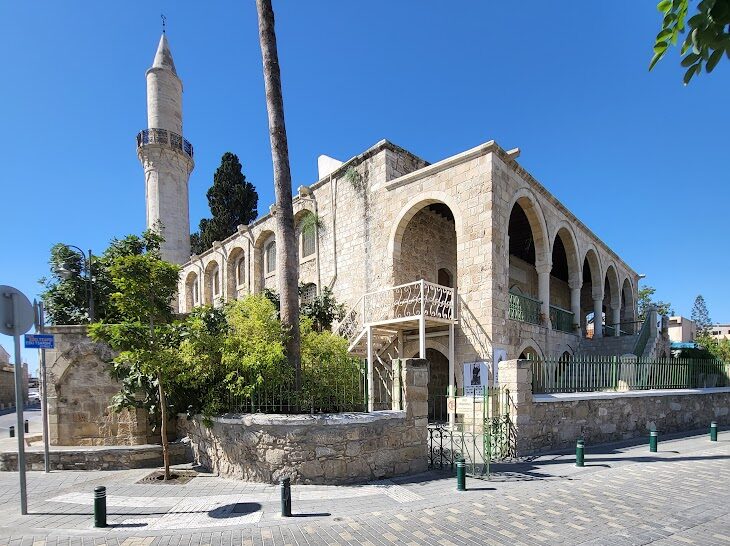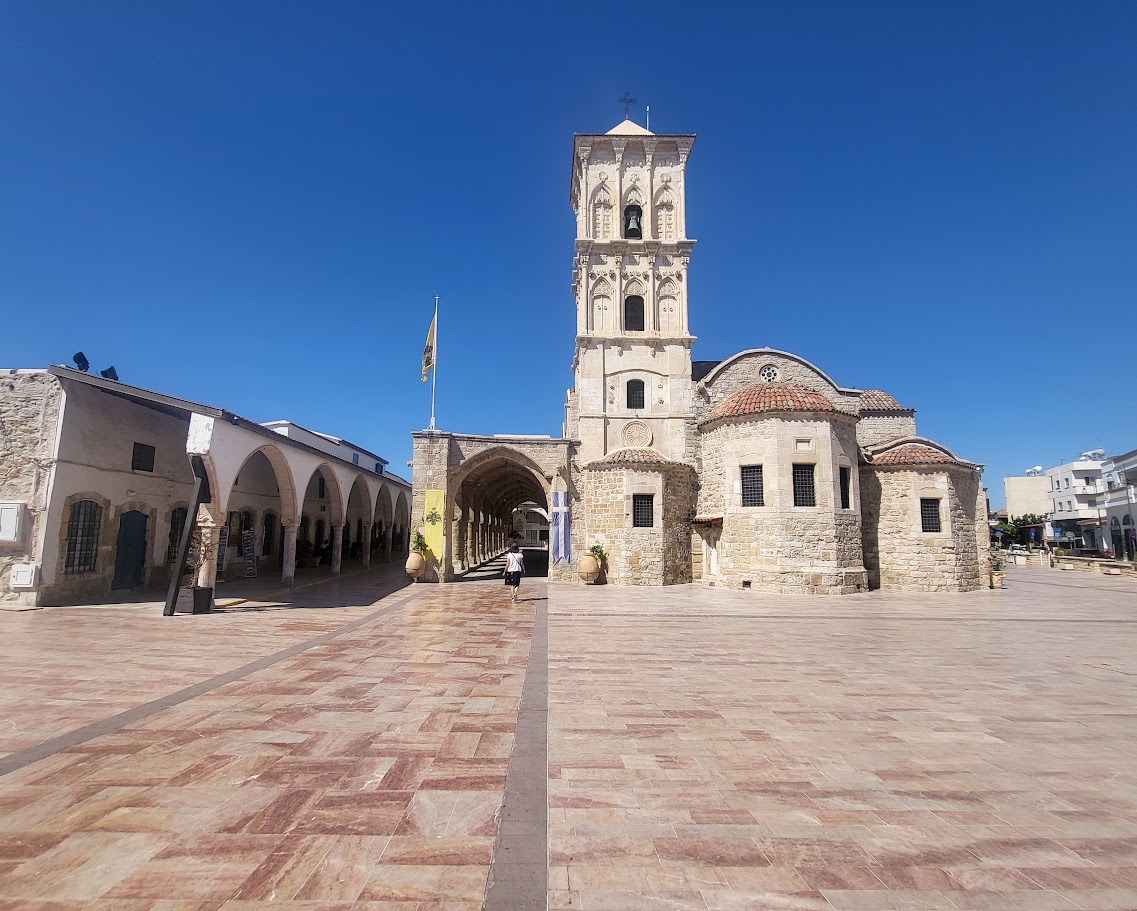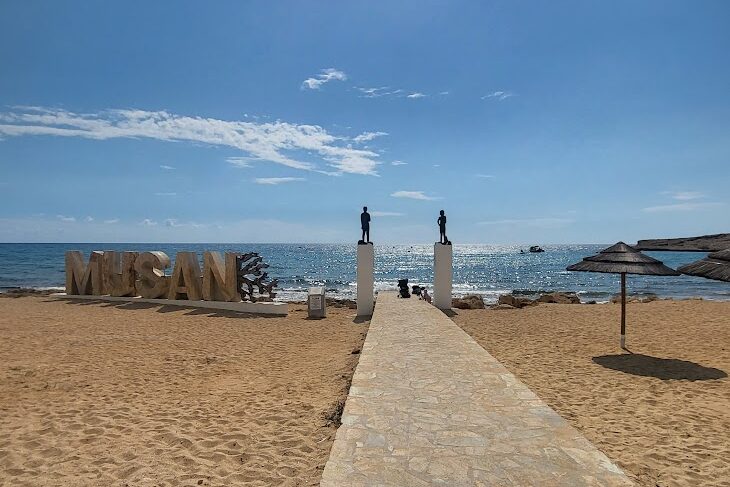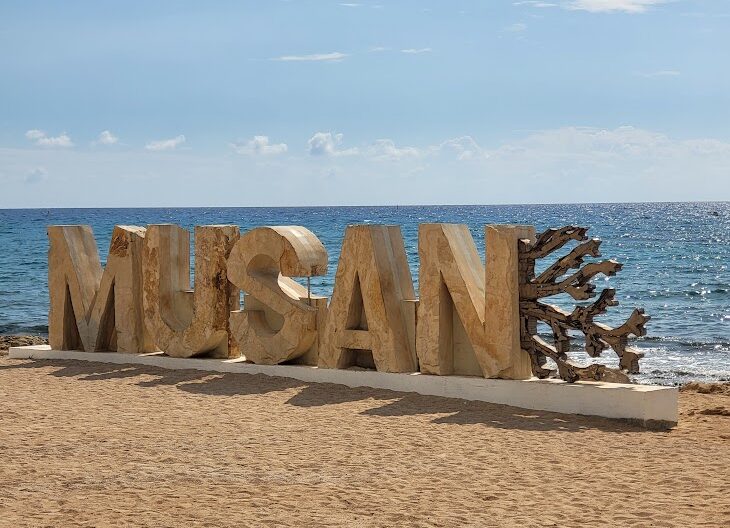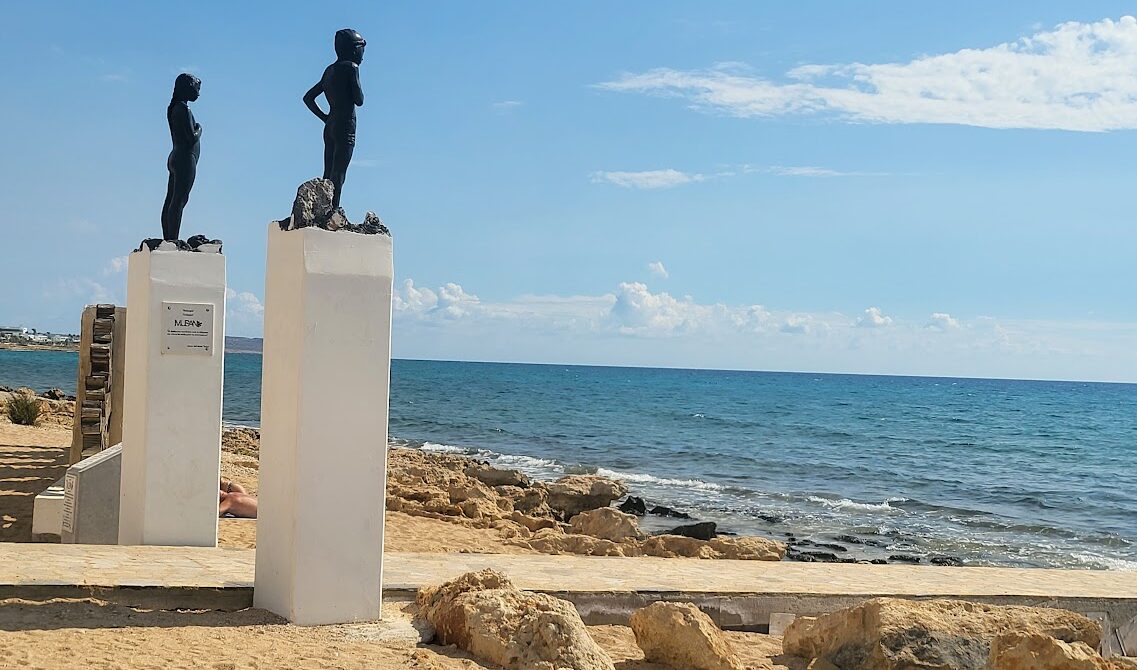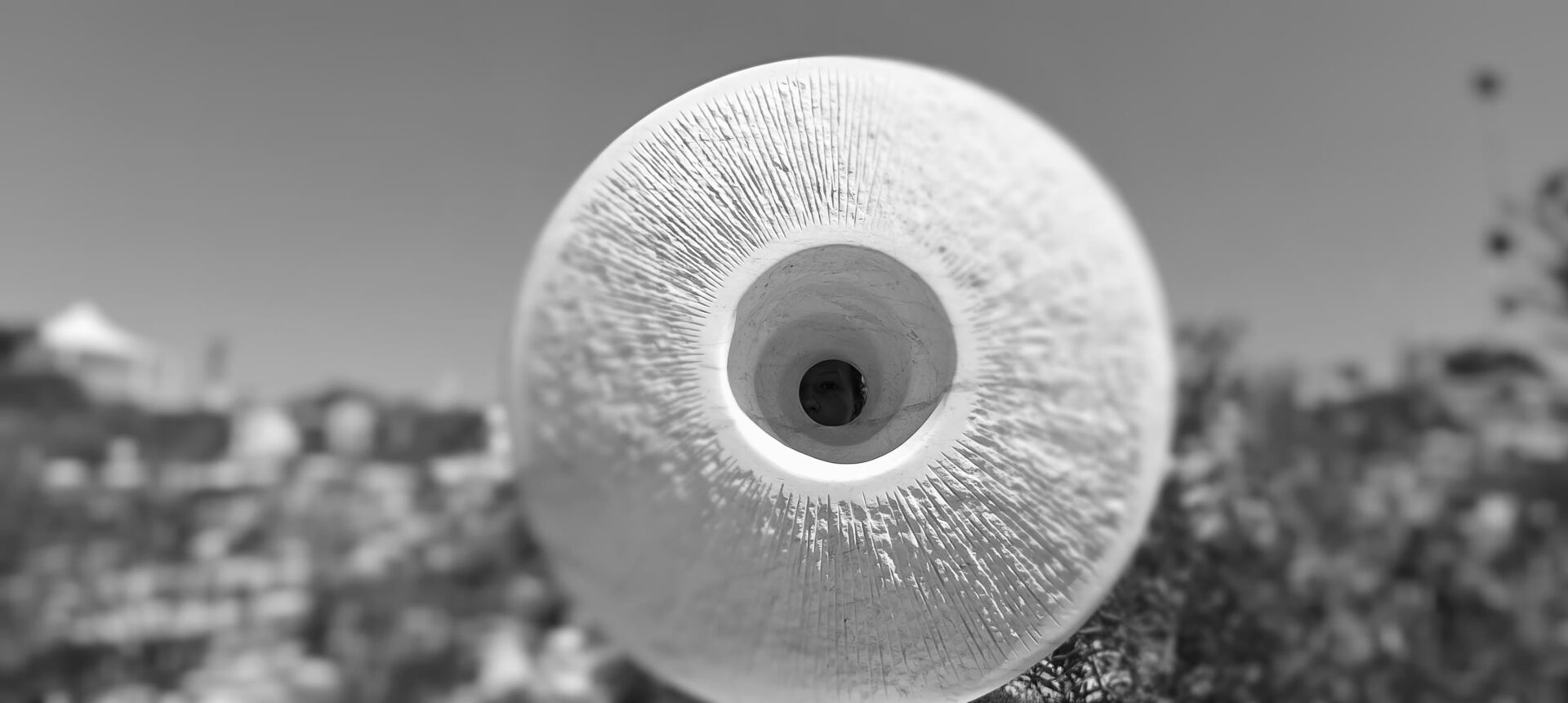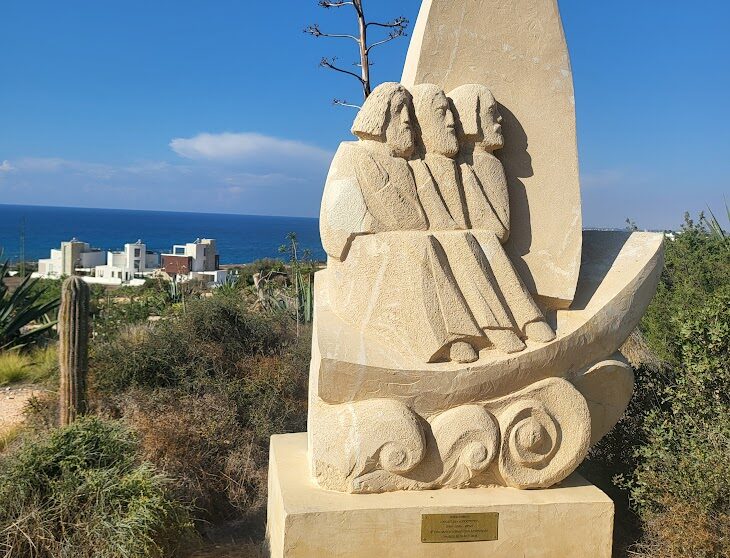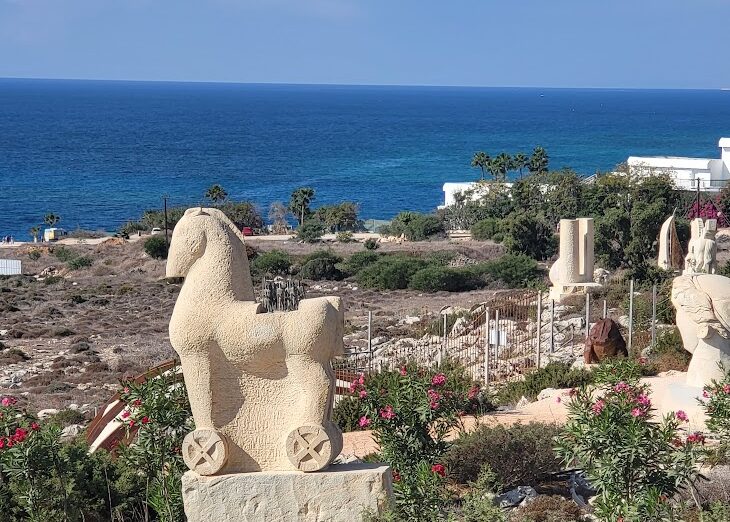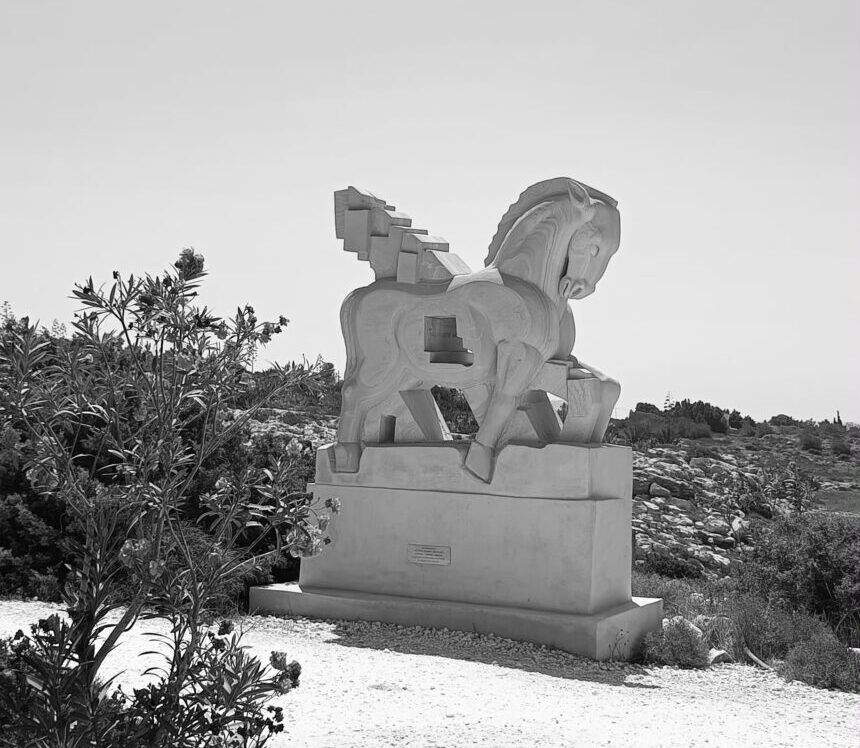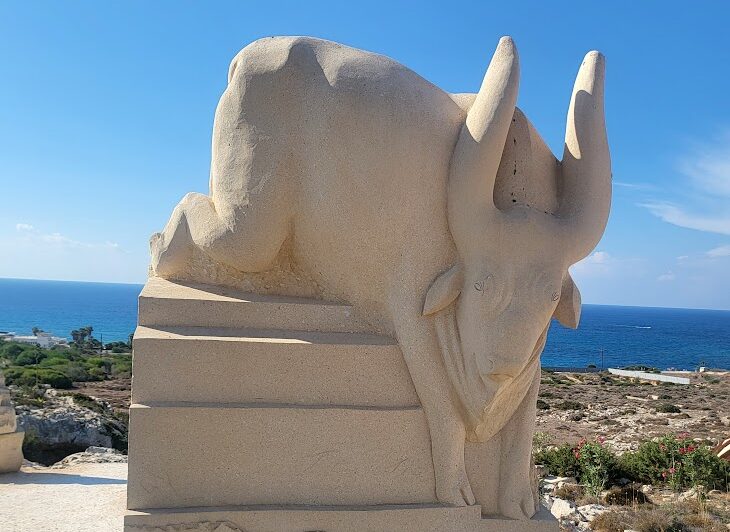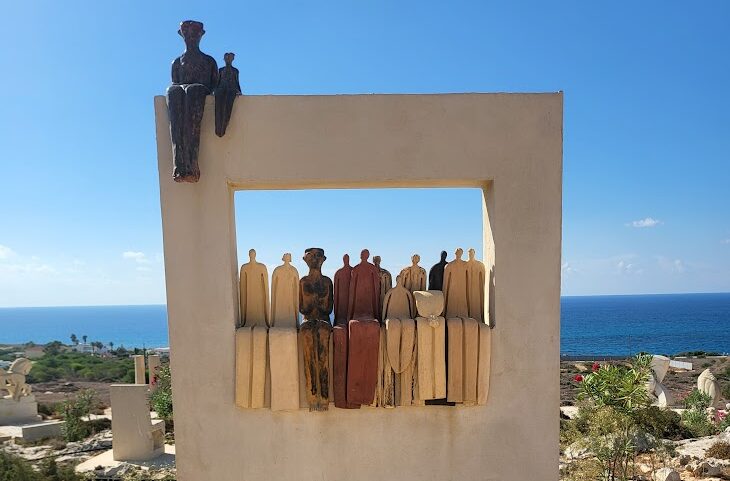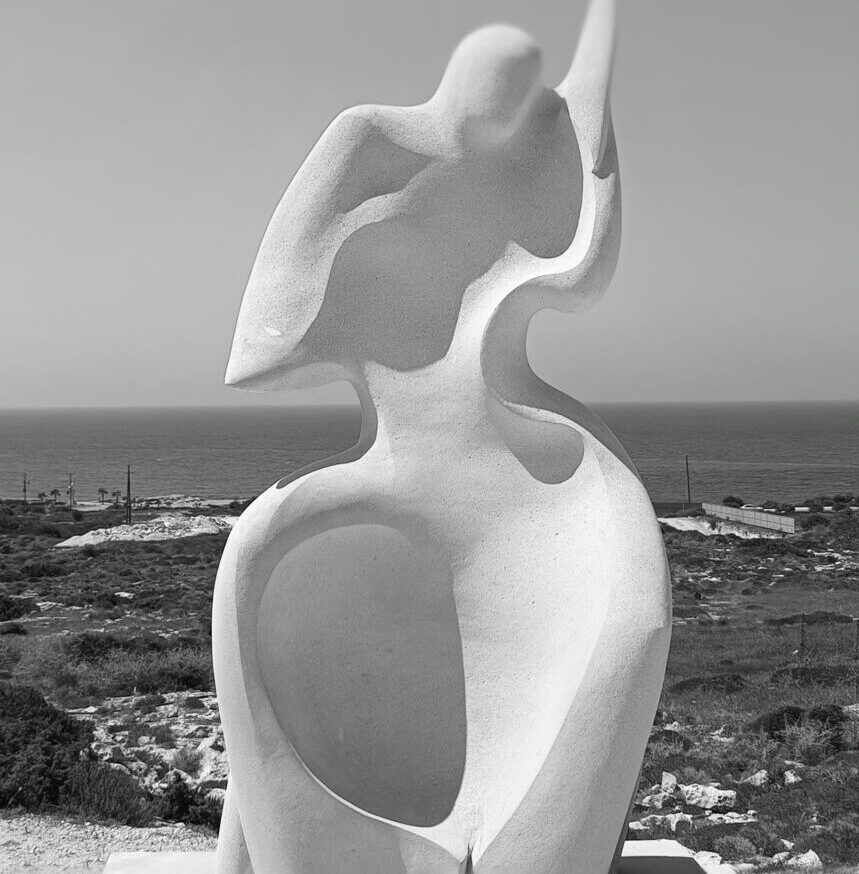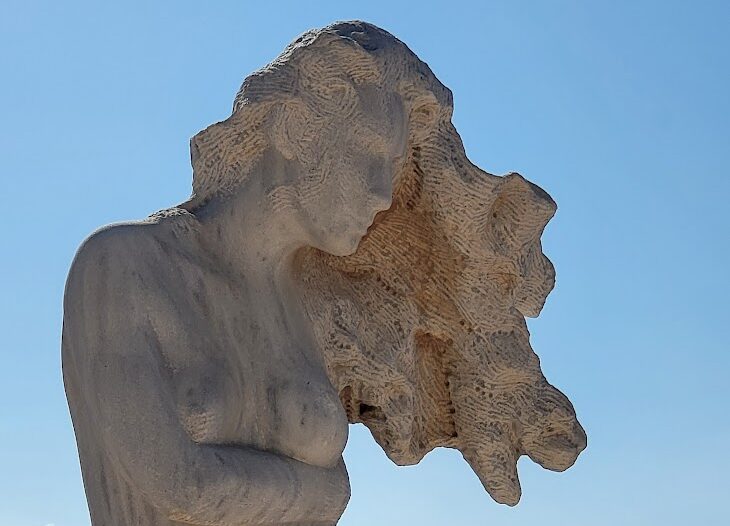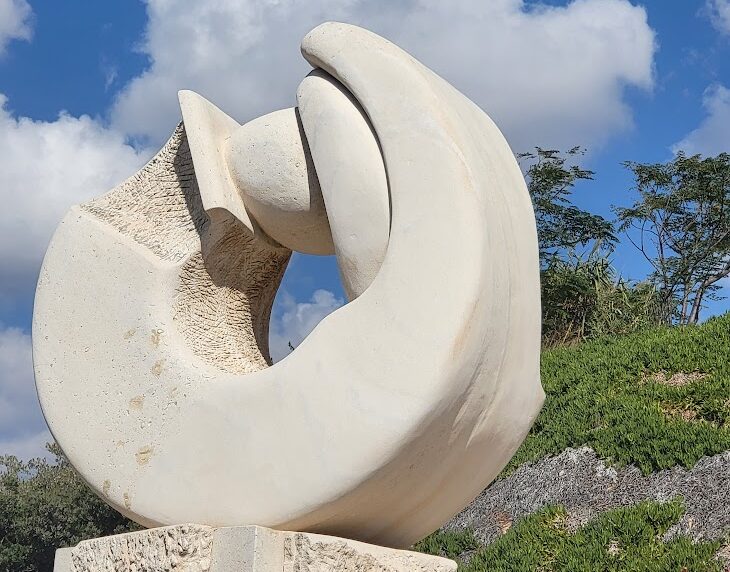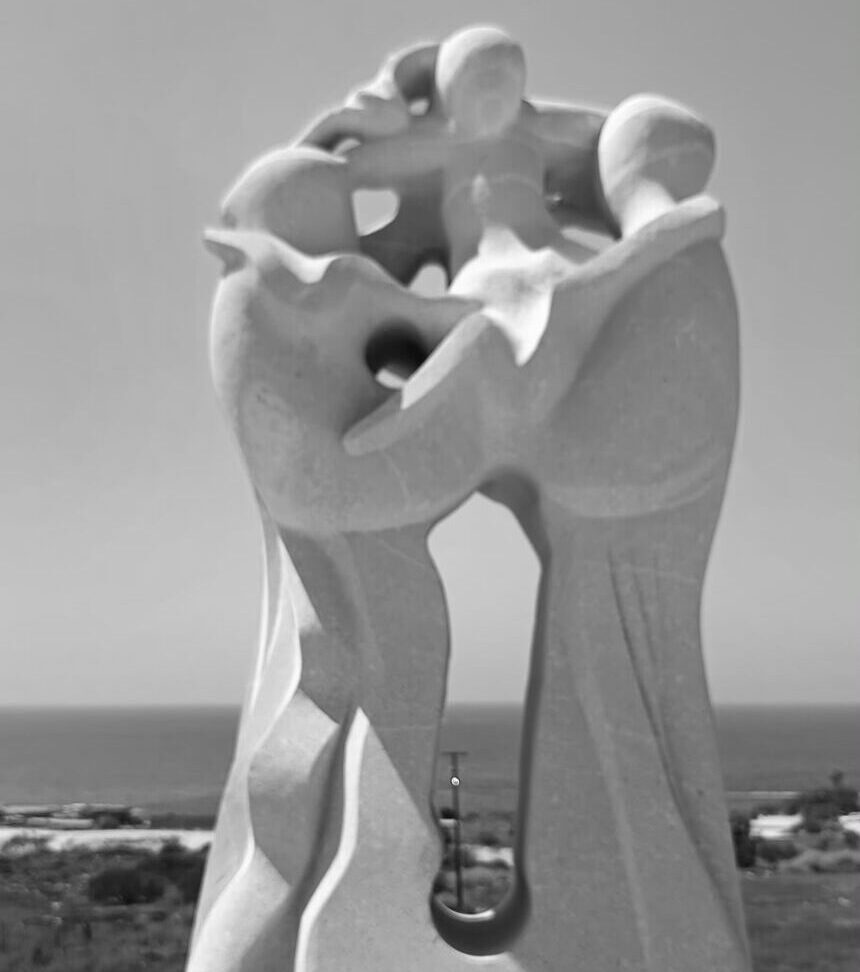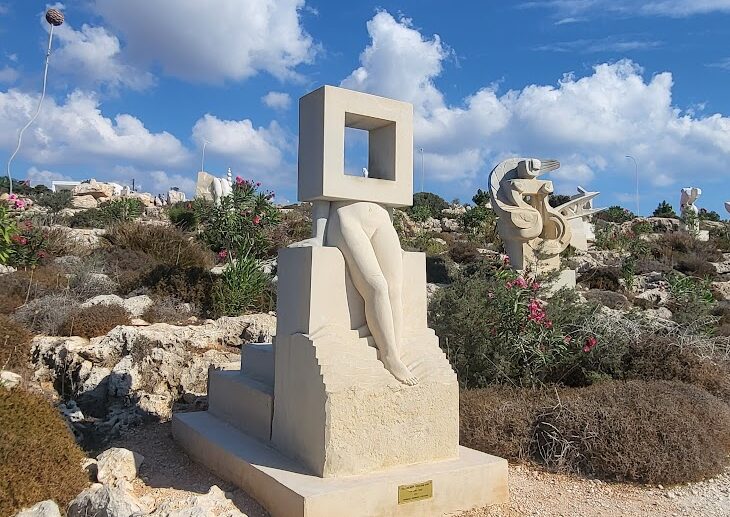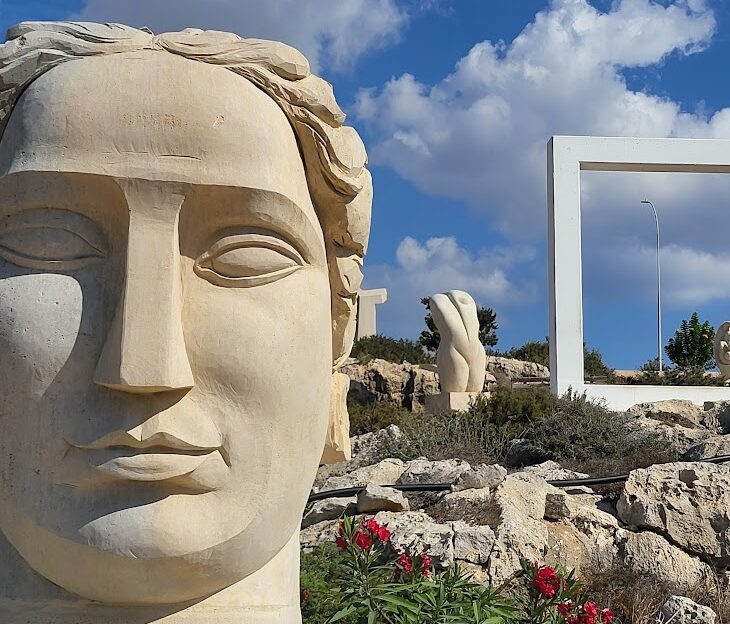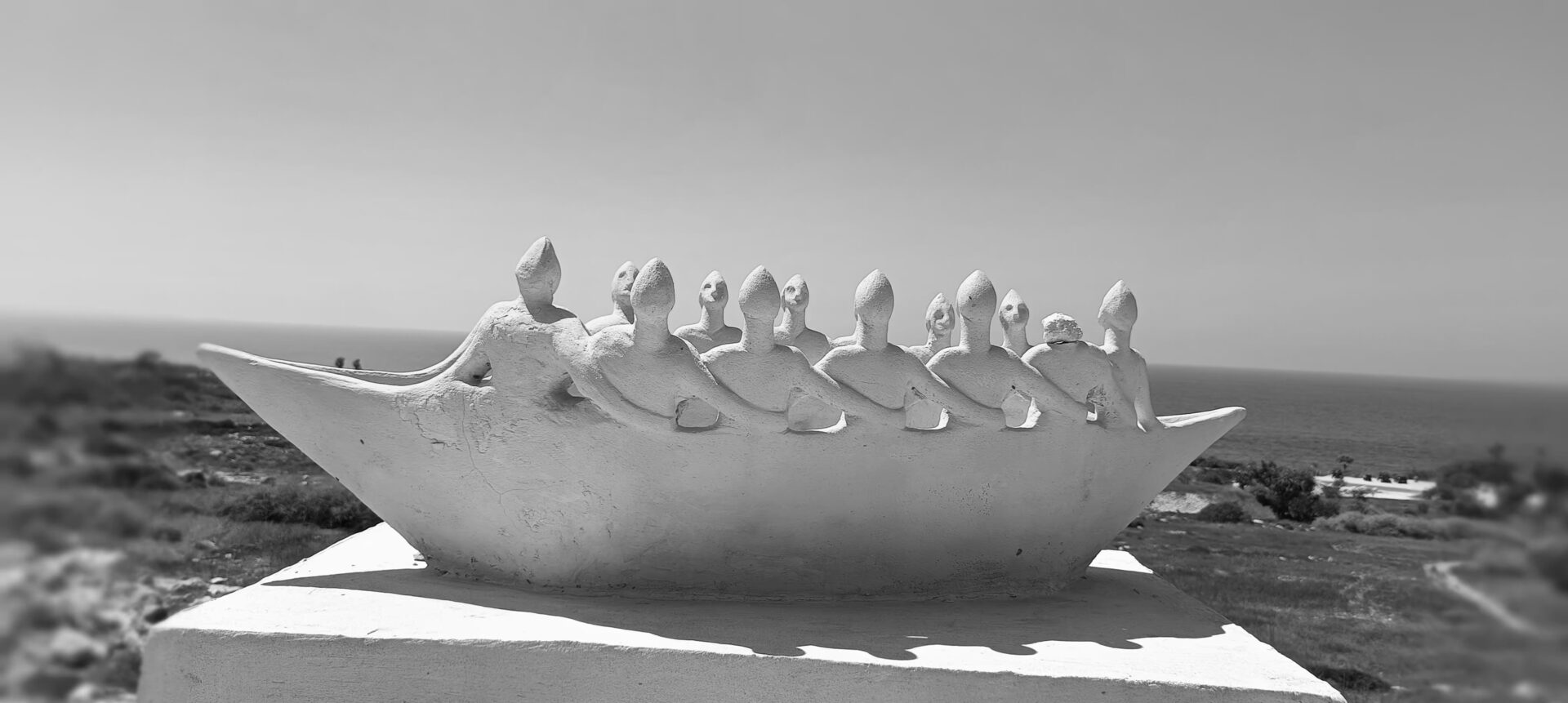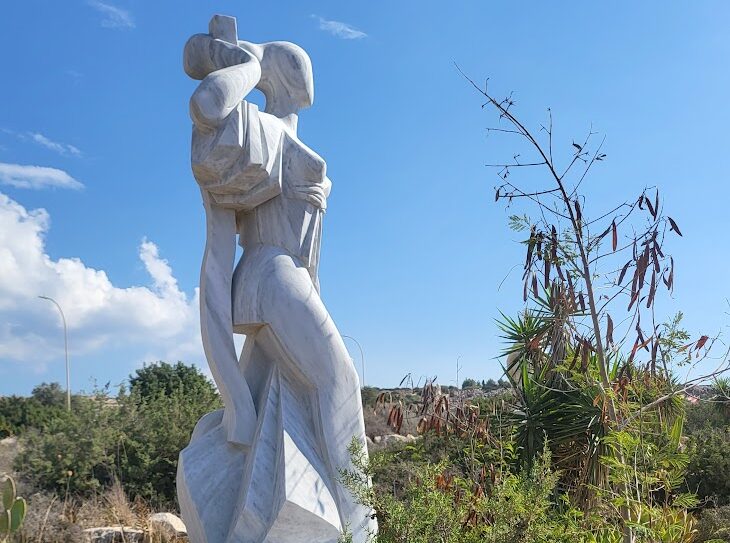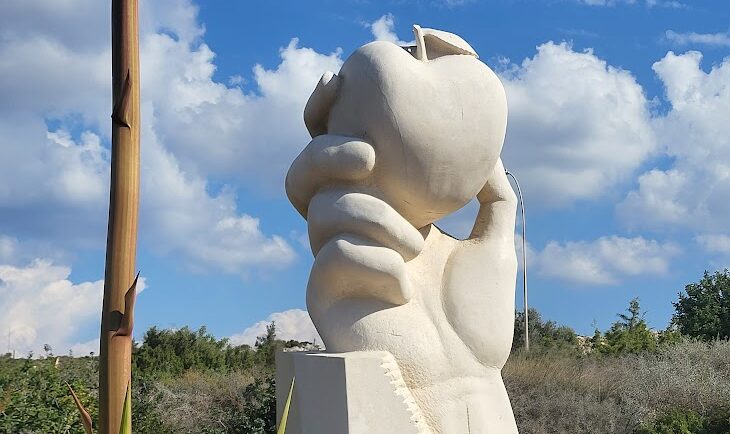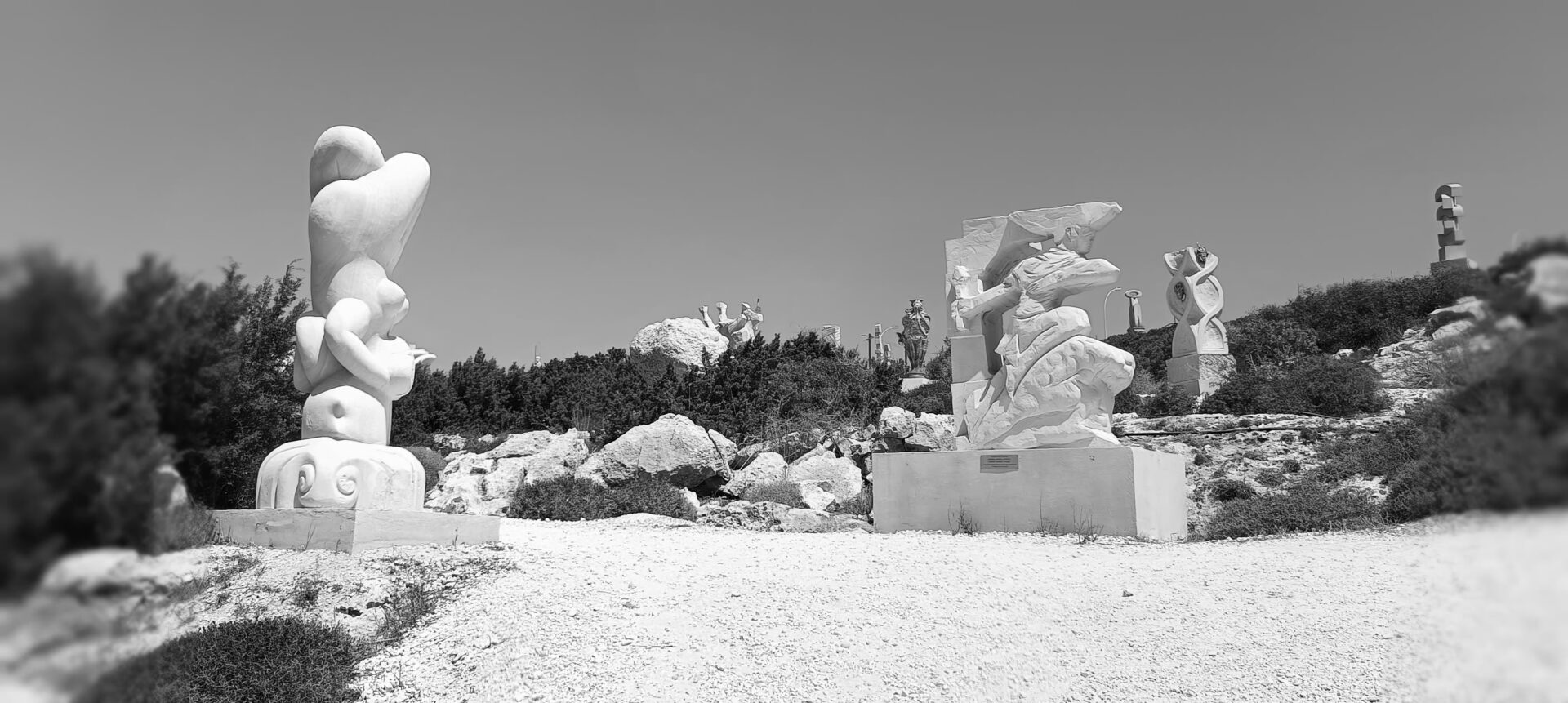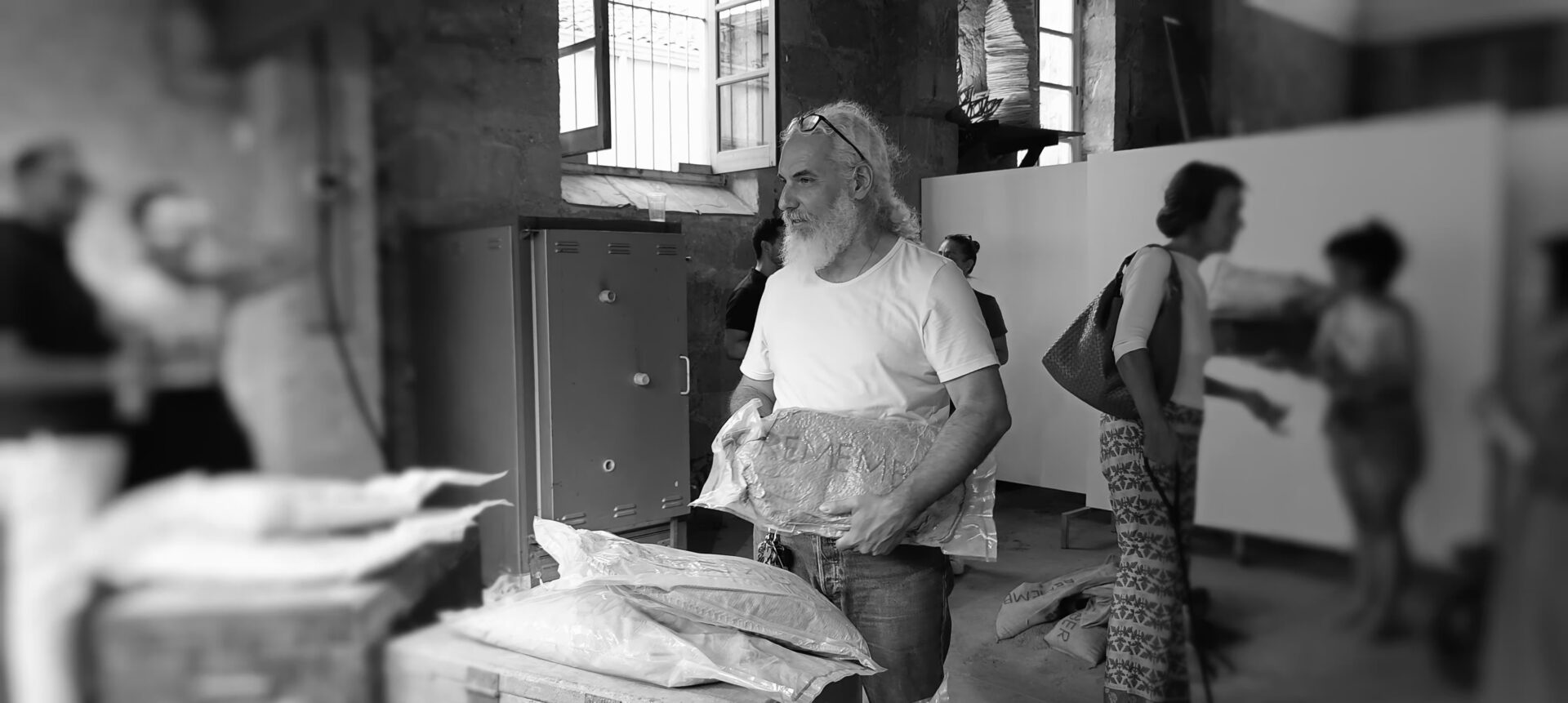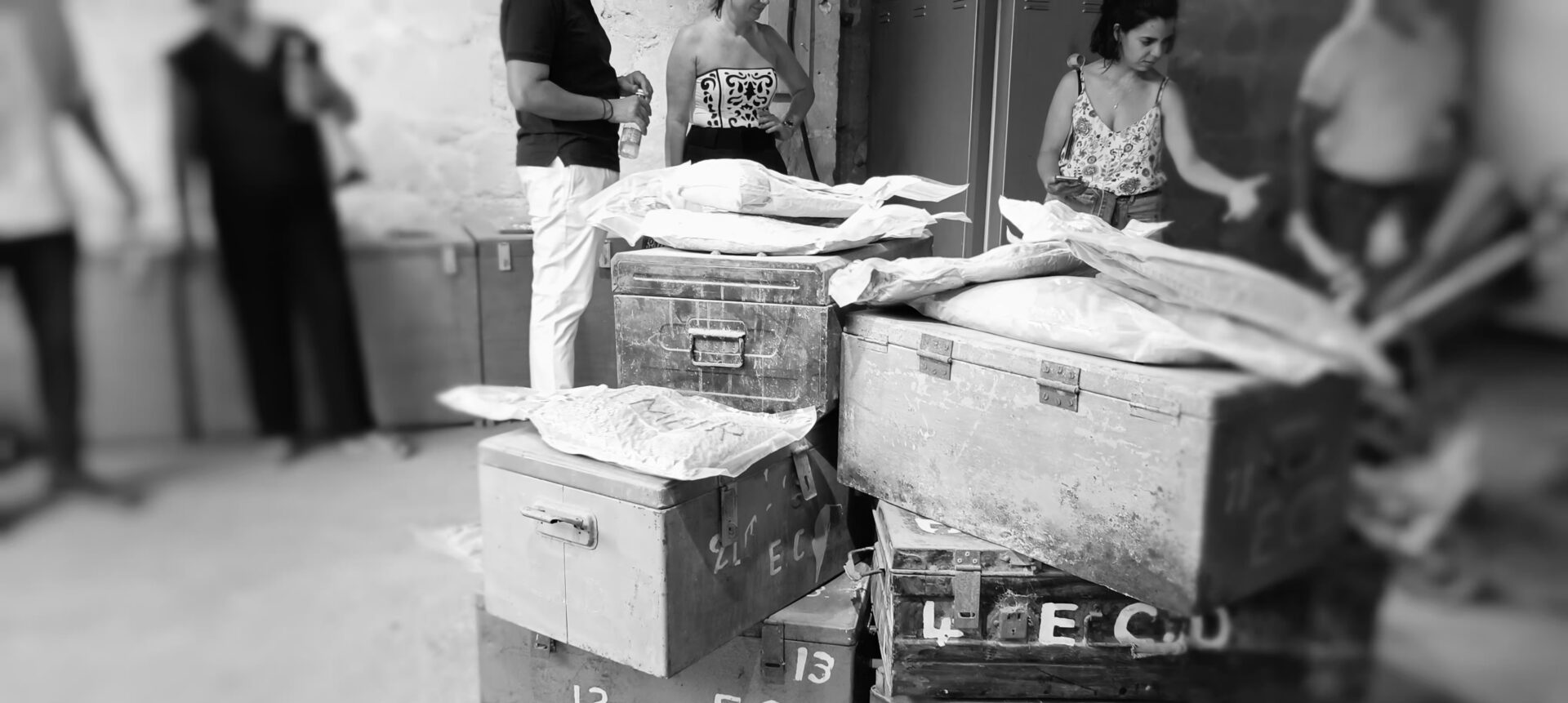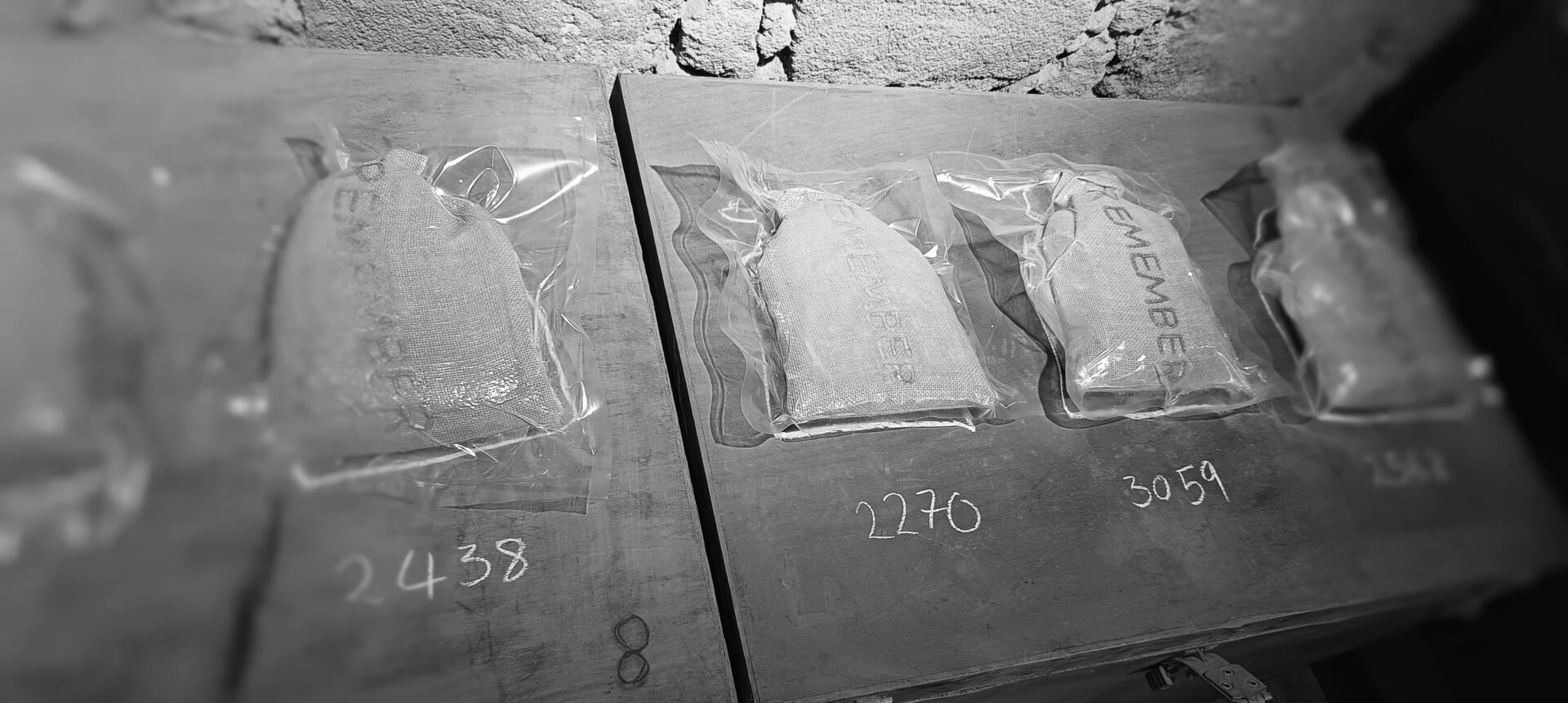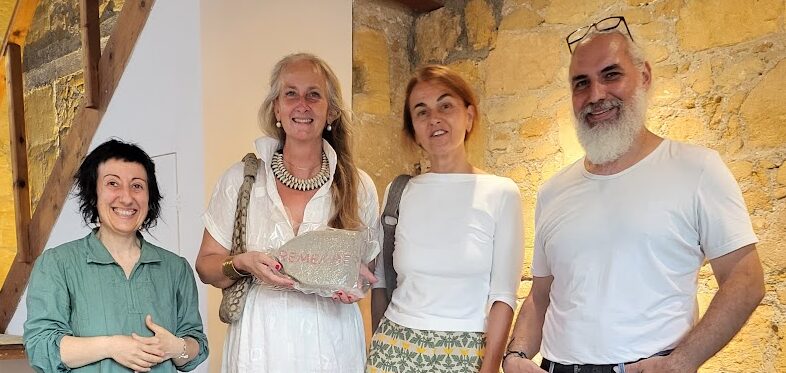The memory of Cyprus between sky and open sea museums: from MUSAN – Museum of Underwater Sculpture to the horizon of the Green Line
The MUSAN - Museum of Underwater Sculpture, designed and created by the English sculptor Jason de Caires Taylor, is an incredible and evocative museum built in the seabed
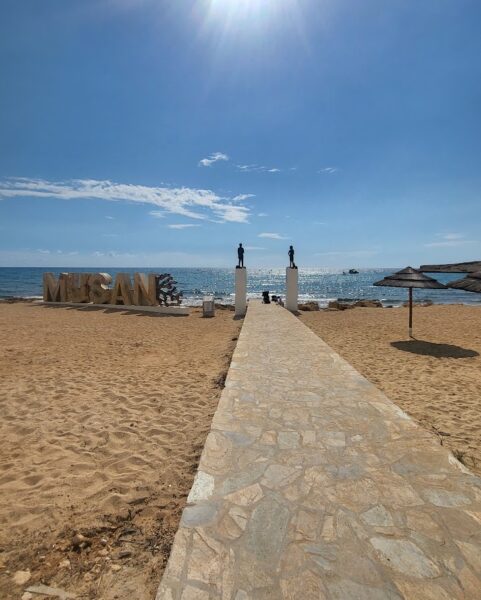
The memory of Cyprus between sky and open sea museums: from MUSAN – Museum of Underwater Sculpture to the horizon of the Green Line
The MUSAN - Museum of Underwater Sculpture, designed and created by the English sculptor Jason de Caires Taylor, is an incredible and evocative museum built in the seabed
When I am at sea, never trusting enough the power of radar, it has often happened to me, looking at the nautical charts of the Mediterranean Sea, to associate the island of Cyprus with the silhouette of a very large Swan, about to take flight: its beak points to Syria, its long wings skim the Turkish coast to the north and, to the south, Lebanon, the West Bank and Israel/Palestine, while its webbed legs take off from the Greek islands.
The August sun and imagination can play tricks on you, but in this strange mirage lies the desire, common to many, to see this island, so sunny and beautiful, free of a division that is as absurd as it is anachronistic. We tourists are used to crossing or skirting it casually, passing, sometimes shamelessly, the green barrier of barbed wire and cement that, since 1974, has cut it in two, crossing it from north to south and disfiguring its face, the so-called “buffer zone“, an intermediate strip under UN control.
The approach from the sea, however, disregards all this, and the beauty of the sand, the wind-chiselled rocks and the mysterious inlets end up concealing everything. The island of Cyprus, in fact, is a veritable open-air museum, where one can visit prehistoric settlements, Greek temples from the classical period, Roman theatres and villas, early Christian basilicas, Byzantine churches and monasteries, castles from the time of the Crusades, imposing Venetian fortifications, Muslim mosques and British colonial-style buildings.
Its beaches, archaeological sites and natural scenery far and wide attract thousands of visitors every year in search of the sea foam from which the Goddess Aphrodite is said to have been born. Goddess of lightness, love, fertility and the white Cypriot waves. Her cult comes from far away, it is said even from the Far East. Worshipped by the Babylonians, the Phoenicians, even the Hebrew population, as Astarte Queen of Heaven, Aphrodite has always been a complex and fascinating divinity, and, in classical tradition, Cyprus was chosen as her cradle and artists of all centuries as their Muse.
Aphrodite, in mythological narrative as well as in the iconography of art, also seals an ancestral relationship between man and the sea, between its fruits and the earth, and for this reason too, for millennia, she has been the object of sublimation and inspiration of the most celebrated artists. Its followers cannot be counted, or as we would say today, its followers, intellectual or not. Even in this new millennium, Aphrodite embodies a model of perfection.
The most romantic, from dawn to dusk, are lapped by the warm waters of a sea stack in Paphos, christened “the Rock of Aphrodite“, off the coast, along the main road towards Limassol, below Petra tou Romiou. But for the more daredevils, who like to dive among the wonders of the seabed in apnea or with scuba tanks, it is really interesting to visit an incredible and evocative museum built in the seabed, the MUSAN – Museum of Underwater Sculpture, designed and created by the English sculptor Jason de Caires Taylor.
In Ayia Napa, just over two hundred metres from the beach, off a particularly touristy seaside town, immersed in the crystal-clear sea, Taylor has installed 93 sculptures depicting human figures, mainly children, amidst silhouettes of trees and giant plants, simulating an underwater forest attached to a clod of earth, crystallised and resting on the seabed. His installations are submerged civilisations, apparently legendary, apparently dead, which actually contain a mystery: life. Here, the artist aims to communicate to the viewer, with snorkel and fins, the regenerative function of art, splitting it into metaphorical and functional, i.e. generating emotions and reflections, on the one hand, and new habitat, like a kind of nursery, a homestead for future marine inhabitants, on the other.
Taylor’s works are destined to grow from year to year. They host, among animal and plant species, a variety of marine flora and fauna, thus drawing amazement, not only among contemporary art enthusiasts, but also among marine biologists. The marine protected area of Ayia Napa becomes a theatre in which an improbable walk of human beings is staged, resulting, in its fixity, in the repopulation of living species. This vision overturns and questions the parasitic and anthropocentric action of man in the exploitation of the sea, which in modern times has altered its balance and its normal evolution.
The silhouettes of young people represent the future and the care they will take of the ecosystem in the future, feeling part of it, in the silence of the sea. In fact, the children who play and explore the marine forest, playing blind man’s buff, between one tree and another, emulating the most famous photo reporters, are a key figure in the complex installation. This metaphor, skilfully chosen by the artist, is a metaphor for man’s search for an authentic, curious and respectful approach to the nature of which he is a part, a virgin approach, just like that of a child who explores and respects nature. He simply admires and photographs it, enraptured by the secrets of its magic, without polluting it or bending it to all its consumerist and devastating needs.
Taylor denounces the importance of reviving the health of our seas, on the other hand, he emphasises the importance of re-establishing a direct connection between man and the natural world, thus returning to the regenerative force of Aphrodite, giving life with his works to artificial reefs, generating usable forms and creating new habitats for endangered species such as corals and sponges. Taylor, born in 1974, is part of an eco-artistic movement, inspired by the principles of the old American Land art and eco-sustainable art movement of the 1970s, which denounced the consequences of man’s direct action on nature, proposing a system of redevelopment starting precisely from art that interacts with the surrounding environment and is left free to evolve and integrate with space.
Taylor, who as well as being a sculptor is also an excellent photographer and, like a demiurge, after having created his works on the seabed, immortalises their evolutions and interweaving’s with the brush, with the flavour of infinity, of nature that reveals ever more incredible and unpredictable scenarios. Man modifies and decorates his surroundings, but the mutation of matter and space has an ephemeral and transitory duration because with the passage of time, nature regains all its spaces, including all those artificial places created by man.
Taylor’s art installation is capable of creating a strong visual dialogue between Art and Nature, from which emerges an attempt to recontextualise the relationship between Man and Earth. At the end of this immersion, of this somewhat unusual journey, the visitor re-emerges with a marked new awareness of his or her essence in relation to nature, discovering that he or she is part of it and not merely an observer or external manager. Taylor was among the first sculptors to place his installations below the surface of the water. He has debuted in other parts of the world such as Australia, the Maldives, France and in 2009, with The Silent Evolution in the city of Cancún, he generated the largest underwater museum in existence: the M.U.S.A, Museo Subacuático de Arte.
Continuing on our journey, not far from Cape Greko and skirting Kryou Nereu Avenue, before leaving the centre of Ayia Napa, on the right along the hill from upstream to downstream is “Sculpture Park“: a labyrinth of gigantic sculptures that compete in beauty and sumptuousness with the vegetation that surrounds it, a tangle of Mediterranean scrub and succulent plants among the most sought-after. A vast area covered with sculptures erected on important white capitals, inaugurated only ten years ago in 2014, with 50 important works in marble, to which new works are being added year by year, in ateliers en plein air along the street.
Thus parade well-known artists from all over the world, who have measured themselves against the history of Cyprus, choosing from among the many cues which are to be the subject of their artistic research and then become part of a large living gallery. The artists, after choosing their piece of marble, are asked to work in the same place where the work is subsequently exhibited. The genesis of the work and its space-time connection is part of the work itself. More than twenty thousand square metres, stepped towards the sea, allow the visitor to travel through the history of Cyprus and grasp, in the silence of the sculptural narrative, its vitality as well as the stratifications it carries within.
This place will be closely connected to the heart of the city of Rome, in the Archaeological Park of the Colosseum, when on 26 September 2024, the Italian Ministry of Cultural Heritage and the Cypriot authorities will inaugurate an exhibition entitled “Cyprea, the network of Aphrodite” with artists Eleni Kyndini, Lefteris Tapas, Panikos Tembriotis, Vassilis Vassiliades and the Italians Gabriels, Stefania Pennacchio, Rosa Mundi and Nicola Verlato, highlighting the main matrices of Aphrodite, for the ancient Romans, transformed into Venus. This exhibition will then be taken to Cyprus, to the iconic sites of the Goddess, to all her shores, enriched with new works and a growing number of artists.
But the international art community, among the many events planned, could not ignore the memory, in the year 2024, of half a century of an event as tragic as it is still physically taking place, namely the partition of the island. Most of the cultural activities carried out in the Cypriot part of the island were characterised by the silent flavour of modesty and respect for history, in stark contrast to the outright celebrations of conquest in the part under Turkish military occupation. The 15 July 2024, the date of this drama, when a green belt metaphorically blocked the ‘life’ of the magical swan, was commemorated, in the Cypriot part of the country, with a long ‘still and silent’ echo of the sound of a siren in the heart of Nicosia, while Turkish fanfares, on the other side, were extolling and celebrating the occupation.
There are physically two states in Cyprus, one inhabited by Christian Cypriots of Greek origin in the south-western part and one inhabited by Turks in the north-eastern part, recognised only by Turkey and not by the international community. Although the Republic of Cyprus is one of the many star ‘states’ of the United Europe, in its womb it retains an obsolete gestation, out of time, inhabited by twin peoples, so close once and, as if time had stood still, still so far apart today.
Like all the most beautiful islands in the Mediterranean, Cyprus is a pearl that has had many suitors, most notably the Ottoman Empire, which, mixing with the ethnic Greek majority, caused bitter tensions between the two peoples. But with time, it seemed that the two Cypriot communities could live a civilised and peaceful life together, as in so many other states. Already in the past, the Venetians and Queen Cornaro had spread the scent of the law of the free market and the lightness and opportunity of flourishing trade, albeit enclosed in solid stone walls, still perfectly functioning and proud today on the shores of Famagusta, Larnaca as well as in the centre of Nicosia.
Turkish rule ended in 1878, and Cyprus became a colony of the United Kingdom. After World War II, the struggle for independence began, promoted mainly by the Greek component, which aspired to enosis, i.e. the union of Cyprus with neighbouring Greece. Finally in 1960, with the name Republic of Cyprus, and with a Constitution that allowed both ethnic groups to be represented in the government, the island believed it could take flight and, from an ugly duckling, become a Swan again, or rather an autonomous and independent nation.
The United Kingdom, Greece and Turkey were to be the guarantors and champions of this Ovidian metamorphosis and of the new status quo, with the right to intervene militarily only if the balance was challenged. At that time, Cypriots of Greek origin accounted for eighty-two per cent of the inhabitants, while the rest were people of Turkish origin and language. But unfortunately, the two communities came into conflict in 1963 and, after several years of bloody clashes, a fateful showdown was reached in 1974. Greece, ruled by the dictatorship of the colonels, organised a coup d’état, with the prospect of obtaining enosis, and so Turkey, seizing the opportunity, went from guardian to guard, occupying a large part of the city of Nicosia and the entire north-eastern part of the island.
It was a veritable civil war in which a people, who had lived peacefully together until a few days before, began to strike each other to death, occupying each other’s homes, initially on the border line and then extending over the whole island. Between the two disputants, Turkey and Greece, they won, except for Cyprus, which was sliced like an orange, whose sweet and bitter juice has become the main consonant of those old or not so old, survivors of the civil war, tell each other.
For many, especially international diplomacy accustomed to compromise, it would be time to move on, trying to forget the suffering of the past and look towards a concrete solution, respectful of the dignity of the lives of the men who were born and raised in Cyprus. And who better than artists to try to mend the rift of a civil war, to write the introduction of a new chapter, that of Peace, not forgetting the past.
Amongst the many initiatives, all worthy of note, capable of reviving a subtle file rouge, between the past and the present, between Ancient Greece and Old Europe with the modern world, I invite you to visit an exhibition that I personally curated in Nicosia and that is destined to travel to the various institutional and diplomatic venues in Cyprus. The site-specific art installation called “Cyprus Memory“, a few steps away from the UN green line, is curated by the Italian Laura Mega and the Cypriot Vassilis Vassiliades, one of the eight artists who will be exhibiting in the Colosseum Archaeological Park in Rome, in the exhibition dedicated to Aphrodite’s network.
Their evocative work stems from the famous slogan “IO NON DIMENTICO” (I DO NOT FORGET), created by a Greek graphic designer and placed on a hill in Cyprus after the Turkish invasion of Cyprus in 1974 . These words became, over time, the symbol of the struggle for the liberation of Cyprus against the violence and abuse of occupation of one state over another sovereign state, a subject of overwhelming relevance even today regardless of positions. The location is by no means accidental, but an integral part of the performance work. Studio Pentadaktylou 16 is a space shared by five artists, Pentadaktylos, like the five fingers and the mountain range located in the northern part of Cyprus, currently occupied by Turkish troops.
Laura Mega, a foreign eye in a doubly foreign land, identified in the jute sacks, stacked in the trenches dividing the island, the emblem of division and the weight of memory. And with almost hospital-like care, he used 20 sacks, filling them with sand, indistinctly from the north and south, united on the same commemorative front of the Green Line. Each sack, hand-embroidered in red cotton thread, bears the word “REMEMBER“. A message that does not want to fuel hatred, but to remember and preserve the memory of Cyprus, as it was before and today, a reminder to enhance its identity through memory.
Each sack, filled with sand from both halves, represents the body and skin of every Cypriot and the stitches are like stitches on a 180km long wound. With the passing of time, the memory has become a scar, but the pain has never faded, except in the apparent habituation to the indifference of the media circus. The act of losing sand represents the memory of a person that empties itself and dries up its passion. In the performative gesture of artists Laura Mega and Vassilis Vassiliades, they then put each sandbag under vacuum, to preserve the traces of an almost lost memory, as if it were the last effort, even when all hope has vanished. The Cyprus Memory project was funded by the European Union and the Goethe Institut through the Grant – Culture Moves Europe – Second Call for Individual Mobility of Artists and Cultural Professionals 2023-2024.
Chiara Modìca Donà dalle Rose

